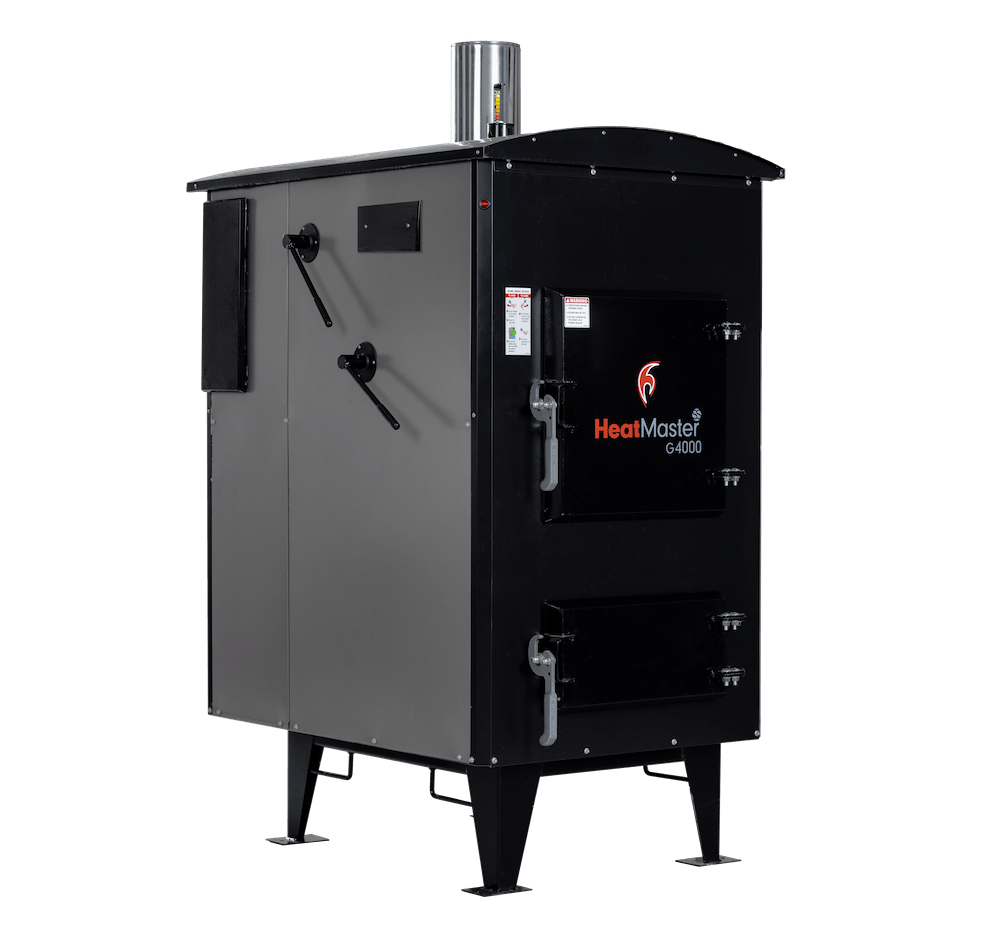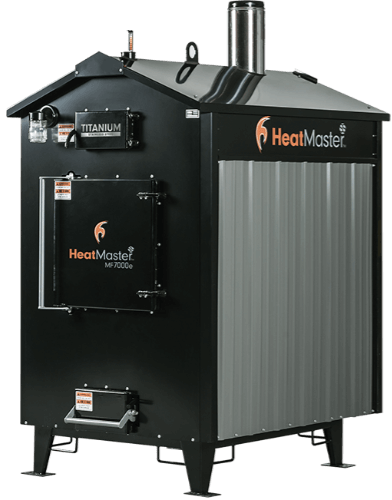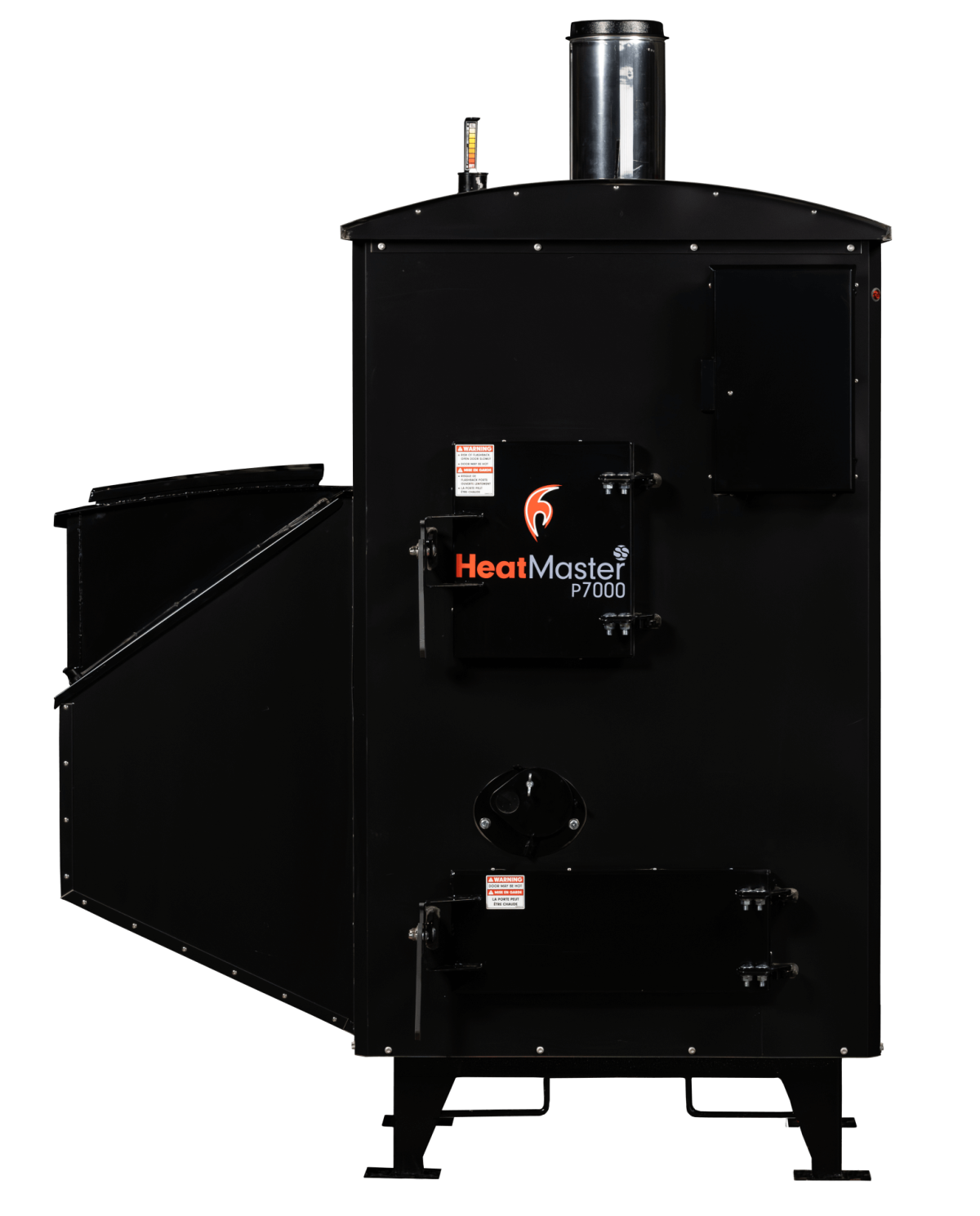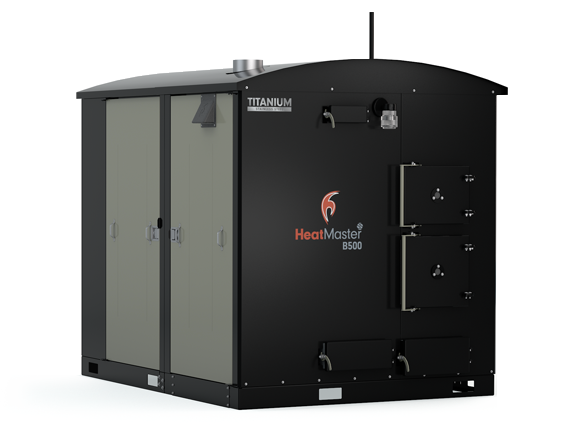Need to Know about Storing & Stacking your Firewood?
Proper wood storage often begins long before a furnace is ever installed. Preparing for your furnace with the necessary materials allows them time to cure or begin the process of seasoning, and builds a viable stock to be used once your furnace is installed.
So what do you need to know about storing and stack your firewood?
The absolute best place to store firewood is outside and away from the home. The main consideration in storing is allowing access for sun and wind to cure or season the wood. This is a process of drying and ensuring proper moisture content for a cleaner and more efficient burn. Storing wood horizontally is best, and when in a stack, it will season quicker than if piled.
1. Stacking
Stacking wood for storage is more a matter of how often it is handled, than it is a matter of what it’s stacked in or on. Racks that can be easily moved by a loader or other equipment are ideal for cut and split wood as it allows for movement without contact.
Wood should be stored off the ground. If a rack is not used, elevate the stack or store wood on crushed rock or concrete. This keeps ground moisture from entering the wood which makes it burn less efficiently.
Airflow on all sides is best when storing, and keeping piles under 5 feet in height means less chance of the stack tipping (and allows kids to help in loading the boiler). Remember to allow for airflow through the entire stack, otherwise you season the wood on the outside of the pile but not as much on the inside. A crisscross stack pattern (four stacked with the next four at a right angle and so on) allows air to circulate more freely when the wood is not piled against a wall and with the prevailing wind blowing through the long axis.
Storing wood inside is convenient and protects it from the elements, but storing wood outdoors is our first choice. Considering the possibility of pests and that the wood will not season well are enough for us to suggest that outdoor stacking and storage is the better option.
When storing outdoors, consider using a tarp to keep snow and rain off the stack. Remember to keep the sides open for airflow, which will assist in seasoning the wood. Building a shelter with a roof to keep the rain off but no sides to let wind and rain in is commonly known as the best way to shelter and season wood
2. When is it Right to Burn?
Depending on the species, you can store viable wood about 3 years for soft woods like pine and up to 5 years for hard woods like oak. When wood gets over 5-6 years old it begins to deteriorate, so the best wood is 1-3 years old.
Hardwoods, like oak, ash and birch are usually at a higher purchase price, but because they’re more dense, you can get two to three times more fire for the money spent. Because of their density, they provide more available fuel and a higher temperature for significantly longer periods of time.
Green wood (freshly cut wood) is not ideal to burn, as it creates creosote and burns colder. The furnace will continue to pull moisture out of the wood, using BTU’s for moisture control before they can be used for their intended purpose. Waiting until it is cured or seasoned will result in a cleaner, more efficient burn and longer burn times.
Moisture content in the wood will either increase or decrease your burn efficiency. Factors that will effect this include when the wood was harvested, if it is split, and if there is significant sunlight and airflow on the wood. Wood harvested in the winter will have less internal moisture than wood harvested in the summer.
One good way to tell if firewood is dry is to take 2 pieces of firewood and hit the ends together. You should hear a sharp “clank” if the wood is dry. Two pieces of firewood that aren’t dry will produce a “thud”. Dry wood also weighs less than wet wood. A properly dried piece of oak firewood shouldn’t be very heavy.
Another way to check moisture content is to take an already cut and split piece, split it again and then test the freshly split/inside edge for an accurate moisture level.
Additionally, moisture meters can be purchased for less than $50 at most stores and can also be used to test moisture content of lumber, drywall etc. They offer an empirical and accurate moisture reading very quickly.
A 20% internal moisture content is ideal, ensuring that it will burn cleanly in the furnace without BTU loss.
3. Seasonal Storage Considerations
The main consideration in seasonal storage is allowing access for sun and wind to season the wood throughout the stack. Splitting wood for storage is key (at least in half) as it reduces the moisture content of the wood.
Moisture content in the wood will either increase or decrease your burn efficiency. Factors that will effect this include when the wood was harvested, if it is split, and if there is significant sunlight and airflow on the wood. Wood harvested in the winter will have less internal moisture than wood harvested in the summer.
A 20% internal moisture content is ideal, ensuring that it will burn cleanly in the furnace without BTU loss.
For more info on a how seasoned firewood is a clean form of energy, check out https://www.firewoodmanitoba.ca/environmental-info/
Planning ahead for proper wood storage is essential for furnace owners. Ensuring an efficient burn means your wood supply goes farther and your BTU’s are not wasted on reducing moisture content. Proper storage of your firewood ensures your supply is seasoned throughout and ready to burn whenever you need it, regardless of weather conditions.
– Clint Pinder
Owner, Firewood Manitoba




